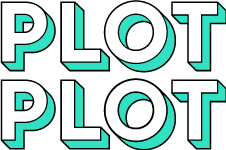Advances in technology always drive innovation and change in the world around us. Entire industries are disrupted and either keep up with the changes or cease to be relevant. The roughly $560 billion advertising industry is not immune to this.
Online Ads Are Becoming Saturated
The advertising industry has already seen major changes in the past few decades with the advent of online advertising. Transactional ads are more easily pushed to the right audiences and consequently tracked. In recent years however the percent increase of advertisers online has exceeded the increase of new users. Also, online advertising costs are rising five times faster than the rate of inflation. This increased saturation coupled with the rising popularity of ad blockers and user’s wariness about how their data is being used is paving the way for new breakthroughs. In addition to new channels starting advertising programs to meet the demand, there has been an increase in new technology being used to innovate how we advertise both on and offline.
More Competition Brings More Innovation
A trend that has been picking up lately is for individual content communities to share ad revenue with contributors through partnership programs. There are a few variations that are used by communities such as Quora, Medium, etc. Minds is a platform that is rewarding contributors with blockchain based cryptocurrencies depending on how much attention their content draws relative to other contributors. One browser is following suit and has potential to shake up not only the content contributor’s world, but advertiser’s as well.
Rather than just reward content contributors based on how much awareness they receive, Brave is paying out cryptocurrency to users as they see ads. Brave and likely other’s who follow a similar path, are trying to provide a better experience for both the advertiser and user through blockchain technology. The privacy focused web browser automatically blocks cookies and ads but allows users to opt in to viewing ads in return for micropayments of the cryptocurrency BAT (Basic Attention Token). Users are then able to withdraw the cryptocurrency or give back to content creators through “tips.”
Users experience less unwanted ads and a promise of increased speed, but advertisers aren’t left out to dry in this deal. Because users opt in to viewing ads, they tend to be more engaged. The fact that they opt in also means they are a real active user and not a bot. There was an estimated $7.2 billion in digital ad fraud in 2016 and some reports say that it is growing as much as 50% year over year. Brave hopes to eliminate this click fraud and help advertiser’s stop wasting money.
Brave stores data on the user’s device, so their privacy is not breached. Ads are then matched to users at the device level. The users then earn BAT that they can tip to content creators and the content creators can in turn use that BAT to pay for ads. The incorporation of blockchain technology into advertising will likely cause more advancements in the coming years.
Who Will Do It First?
Blockchain is becoming a more used technology everyday and it was only a matter of time before someone incorporated it into advertising. It provides increased security and mitigates fraud online. Both of which are common concerns when discussing online advertising. Brave is trying to push the envelope with this integration of new technology, but others are likely watching to see how this plays out.
Internet giant, Google, has already developed tools for searching cryptocurrency transactions and in June of 2019 announced an integration with their cloud-based database service and a blockchain oracle allowing businesses to complete “smart contracts.” Not long after this announcement, Facebook created a new internal unit focused on blockchain. They had already announced intentions to create a cryptocurrency and may be using blockchain to verify user’s identities in a similar manner to Brave’s system.
The question is not if blockchain will change the way we advertise online, it’s who will do it first.


